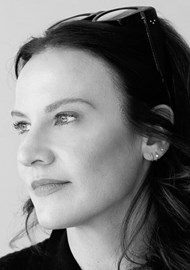The 14th Annual Congress of the European Society for Photodynamic Therapy (PDT) in Dermatology programme contained an abundance of interesting and varied clinical information and research on the licensed and unlicensed indications of PDT. These included the many areas of research, which are being conducted globally into the numerous potential medical and dermatological indications for future applications.
Daylight PDT for treating actinic keratosis was one of the most popular topics addressed throughout the congress with many renowned expert speakers from across Europe sharing their varied experiences of its application and clinical research data. This indication has yet to obtain approval and licensing for use in the UK.
One of the many highlights was seeing a live demonstration, including lesion preparation for a patient undergoing daylight PDT and subsequent daylight exposure using methyl aminolevulinate (MAL). This concept generated much discussion as variations in the daylight technique emerged from various speakers from across Europe. Professor Jean Phillipe Lacour and Dr Abdallah Khemis conducted the daylight PDT treatment demonstration. Professor Lasse R Braathen delivered an interesting discussion on the basics of conventional PDT including the level of discomfort in relation to the daylight comparison.
Dr Colin Morton discussed the recent review of the current evidence supporting the use of topical PDT across all dermatological indications. This has an updated extensive, multinational guideline on PDT currently under submission to the European Dermatology Forum. This from a useful update on the evidence-based recommendations on the use of conventional, ambulatory and daylight PDT in current and emerging indications, including use in immunosuppressed patients.
Dr Patrick Gholam presented an interesting discussion on the influence of pre-treatment with urea 40% cream on face and scalp actinic keratosis on efficacy and tolerability. Dr Gholam stated his objective was to compare the effects of curettage, keratolytic pre-treatment with salicylic acid 10% in petrolatum and urea cream 40% on efficacy and tolerability of PDT. He concluded that keratolytic therapy with salicylic acid or urea is an effective pre-treatment for PDT of actinic keratosis. His data indicated that keratolytic pre-treatment leads to an increase in pain during PDT with pronounced local reactions.
PDT and its potential role in cosmetic rejuvenation was another topic addressed by several speakers. Dr Brigitte Dreno delivered a very interesting presentation on PDT in acne, raising some interesting concepts for consideration: the two targets are the sebaceous glands and propionibacterium acnes and the current challenges with existing protocols employing lower drug and light doses in contrast to higher doses of PDT to induce destruction of sebaceous glands but induce pain and profound inflammatory response. The data indicated that the majority of randomised controlled trials on a limited number of patients showed a reduction of 60% at three months and that the future will be to research the place of daylight PDT in treating acne.
Professor Hans Christian Wulf delivered a very interesting talk on attempting to reduce the inflammation in PDT without reducing efficacy. He described a technique to target the affected cells only, with the aim to keep most PpIX within affected cells to destroy these through apoptosis, thus avoiding extracellular leakage resulting in inflammation and necrosis. This is achieved through an application of methyl aminolevulinate for 30 minutes, while illumination is still performed after three hours. This results in a reduced amount of average PpIX fluorescence in an area treated for actinic keratosis, and thus reduces inflammation. Professor Wulf presented the results of his study with findings consistent with reduced inflammation with effect on complete remission of actinic keratosis, unchanged three months after PDT.
The congress agenda comprehensively covered many aspects of PDT, both academic and clinical. The learning I have taken from the meeting has had a significant impact on my future PDT treatments and given me tremendous insight into what the future may hold for new indications.
Visit www.euro-pdt.org for further information.




